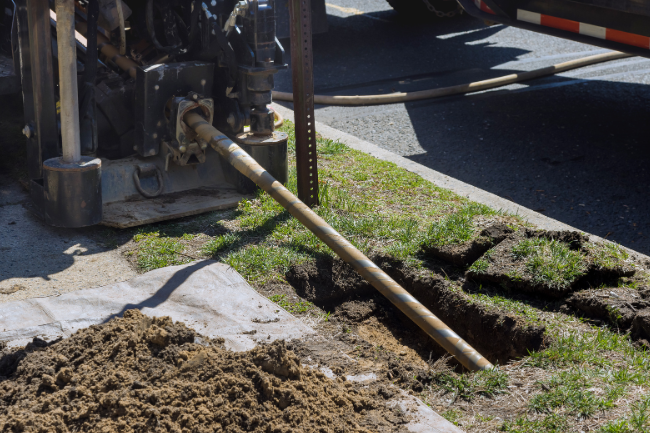Everything You Need to Know About Municipal Plumbing
Posted by William Heinselman on
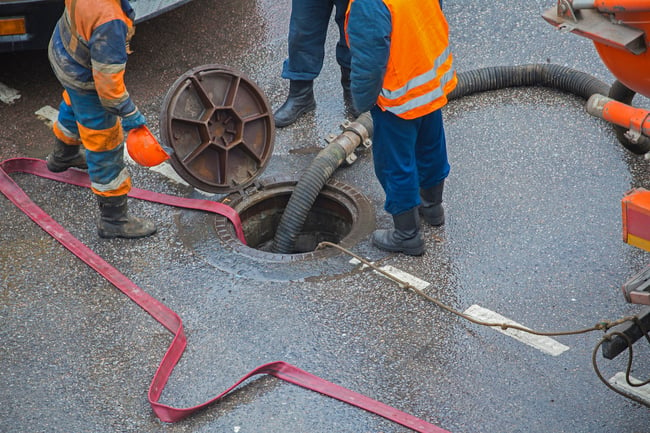
As of 2021, there are more than 800,000 miles of public sewer lines and 500,000 miles of private sewer laterals in the United States, according to the American Society of Civil Engineers. And, as cities expand to cater to growing populations, these numbers are only increasing.
To meet such high demands, municipalities need highly intricate plumbing systems, which are made up of a network of pipes, fixtures, and infrastructure that supplies clean water and disposes wastewater within a community. A municipal plumbing system includes water treatment plants, distribution pipelines, sewer lines, pumping stations, and various components designed to ensure the efficient and safe transport of water.
This guide outlines everything you need to know about municipal plumbing systems, including key components, challenges, repair techniques, and how these all work together to support local communities.
Main Differences Between Residential, Commercial, and Municipal Plumbing
You’re probably already familiar with plumbing basics. The pipes in your home supply water that you use every day, and the drains throughout your bathrooms and kitchen allow any waste to be taken away from the property and properly treated. However, when it comes to municipal plumbing, these features are a lot more complex and require experienced professionals for repairs and maintenance, rather than a simple DIY fix when something is broken.
Scale
Perhaps the most obvious difference between residential, commercial, and municipal plumbing is the sheer size of each system. Depending on the home, pipes may only transport water and waste for a few people, requiring about 400 gallons of water each day. Now, think about how much water is used for commercial buildings, like offices, hospitals, and hotels.
Municipal plumbing systems, on the other hand, are vast networks that serve entire communities, managing the transportation of water and sewage on a large scale through main sewer lines and water distribution networks. These large-scale systems require more extensive infrastructure to handle the demands of a city or town, while residential and commercial systems are tailored to the specific needs of individual dwellings or businesses.
Complexity
As mentioned, residential plumbing systems are designed to meet the needs of individual homes. So, these systems are usually quite simple as they only need to transport smaller volumes of water and sewage, in comparison to other plumbing systems.
Commercial plumbing systems often feature more complex layouts with multiple bathrooms, kitchens, and specialized equipment. Commercial buildings may require larger-diameter pipes, increased water pressure, and additional fixtures to accommodate higher water usage. Additionally, commercial plumbing must adhere to specific regulations and standards to ensure safety and hygiene, especially in settings such as restaurants, hotels, or manufacturing facilities.
Since municipal plumbing systems are intended to provide potable water and remove waste from communities, it comes as no surprise that these systems are quite complex. Advanced infrastructures, including main sewer lines, pumping stations, and water treatment plants, ensure the reliable delivery of clean water and effective sewage management for an entire community.
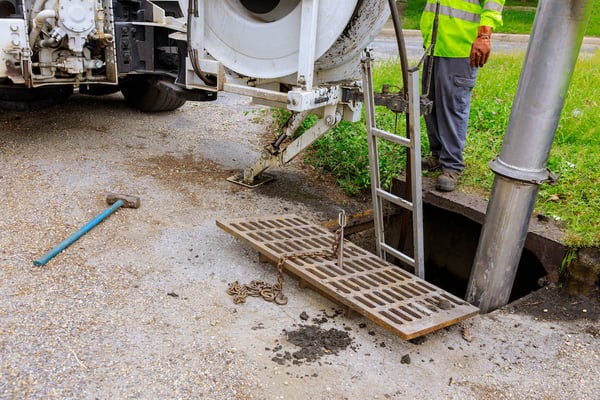
Responsibility
In your home, it’s up to you to have any plumbing issues resolved. Whether that’s a DIY fix or a call to your local plumber, ultimately, the decision to find the issue and repair it is up to you. But, when it comes to your community, when is the city responsible for water line repair and maintenance?
Cities and municipalities are accountable for addressing issues with the public sewer main, including blockages that can lead to sewer backups affecting homes and businesses. In the event of a clogged sewer system causing backups in homes with basements, residents should contact their local city or municipality for assistance. However, while the city is responsible for problems originating at the main underground sewer pipe, it’s up to the homeowner to take action for plumbing repairs concerning the pipes running to the main line.
The Ins and Outs of Municipal Plumbing Inspections
Similar to both residential and commercial plumbing features, municipal plumbing systems need to be regularly inspected in order to ensure they function properly. Without these routine checks, underground sewer lines might be damaged without anyone knowing, leading to bigger problems for the local community.
On the note of regular maintenance for municipal plumbing, the frequency of these inspections may vary depending on the age of the system, the volume of water, and its location. For instance, newly installed sewer lines might need less maintenance in comparison to pipes that are several years old. And, sewer lines in highly congested areas will see more utilization (and require more frequent maintenance) than those in less populated areas.
In addition to regular maintenance, municipal plumbing systems are often inspected as a result of unforeseen circumstances, such as severe weather events. In these cases, municipalities will need to conduct emergency sewer inspections which will help identify the cause of any issue and determine a solution.
Whether routine maintenance or emergency repairs, there are a few important elements that plumbers look for during municipal plumbing inspections. This includes:
- Cracked Pipes: The same holds true for most pipe inspections, but for large-scale municipal pipes, any cracks can pose larger issues for the surrounding infrastructure. If water and waste are unable to flow properly as a result of a crack, this means that the water is seeping somewhere that it shouldn’t be and will require immediate attention.
- Tree Roots: In some cases, tree roots are the source of severe pipe damage as they seek out moisture underground and, in turn, lead to cracks in pipes along the way. When conducting regular inspections, plumbers will look for any tree roots that might pose an issue later on and take action to prevent any damage from occurring.
- Blockages: Most municipal plumbing inspections will look for blockages and clogs as they can lead to reduced flow and capacity, causing backups and overflows in sewage systems. This, in turn, poses a threat to public health as untreated wastewater may contaminate water sources and result in the spread of waterborne diseases.
Common Municipal Plumbing Challenges
Municipal plumbing systems play a critical role in ensuring communities have access to clean water and efficient wastewater disposal. However, these systems face various challenges that require careful management and regular maintenance.
Clogs
While homeowners might not face immediate issues with their pipes, over time, improper waste disposal can have a larger impact on the municipal plumbing system in their community. Large clogs and fatbergs, which are congealed masses of grease and non-biodegradable waste, impact the functionality of municipal plumbing systems and may require costly repairs.
Infrastructure
One significant issue is aging infrastructure. Many municipal plumbing systems were installed decades ago, and as they age, they become more susceptible to leaks, corrosion, and failures. Upgrading and replacing old pipes, pumps, and other components are essential to maintain the system's integrity and prevent water loss.
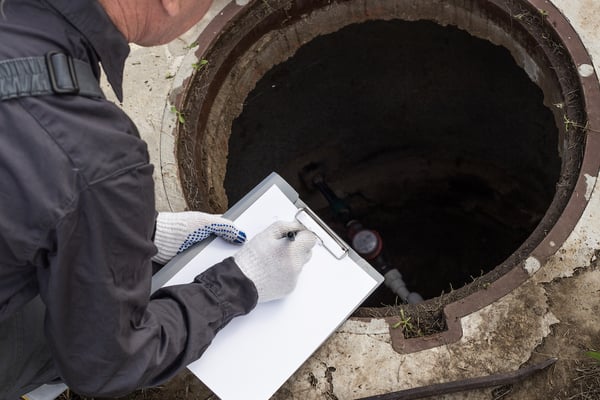
Disruption
On the note of pipeline maintenance and repairs, another challenge that plumbers face with municipal plumbing systems is the disruption to the community. Underground sewer maintenance might require road closures. And, depending on the extent of the problem, these closures could range from several hours to multiple days.
Similarly, water shut-offs may cut off access to water for the community, even if it’s only temporary. But, water is vital for day-to-day functions and business processes, so any impact on access to water will be important to consider.
Contamination
Another challenge is the potential for contamination. Municipal water supplies can be compromised by pollutants, chemicals, or even harmful microorganisms. Maintaining water quality requires rigorous monitoring and treatment processes to ensure that the water delivered to households is safe for consumption.
Additionally, increasing urbanization and population growth put additional strain on these systems, as they must handle higher demand and increased wastewater production. This requires ongoing expansion and optimization of the infrastructure to accommodate the growing needs of the community.
Natural Disasters
Finally, municipal plumbing systems are susceptible to natural disasters, such as floods, earthquakes, and hurricanes. These events can damage pipes, disrupt water treatment facilities, and lead to widespread service interruptions. Adequate disaster preparedness and resilient infrastructure are crucial to minimize the impact of such events and facilitate swift recovery.
Key Features of Municipal Plumbing
As mentioned, municipal plumbing requires maintenance on a much larger scale in comparison to residential and commercial plumbing issues. So, some of the processes and techniques used for municipalities will vary depending on the scale of the problem and the related effects to the community.
Manhole Rehabilitation and Lining
Manhole rehabilitation focuses on the repair and restoration of manholes, which are vital components of sewer and stormwater systems. Manholes provide access points for maintenance and inspection, allowing workers to enter underground sewer networks. Over time, though, these structures may deteriorate due to factors like age, corrosion, and exposure to harsh environmental conditions.
As a result, the rehabilitation process involves various techniques to address structural issues, prevent leaks, and extend the lifespan of manholes. Technologies, such as epoxy lining, are often employed to seal and strengthen the interior surfaces.
Lateral Reinstatement
Lateral pipes, also known as service or branch lines, play a vital role in transporting wastewater from homes and businesses to the municipal sewer system. Over time, these lateral pipes can face issues such as root intrusion, corrosion, or blockages, leading to reduced flow and potential sewer backups.
The lateral reinstatement process often utilizes trenchless technologies to minimize disruption and excavation. One common method is cured-in-place pipe (CIPP) lining, where a flexible liner coated with resin is inserted into the damaged lateral pipe. The liner is then cured in place, creating a seamless, durable inner pipe that restores the functionality of the pipe.
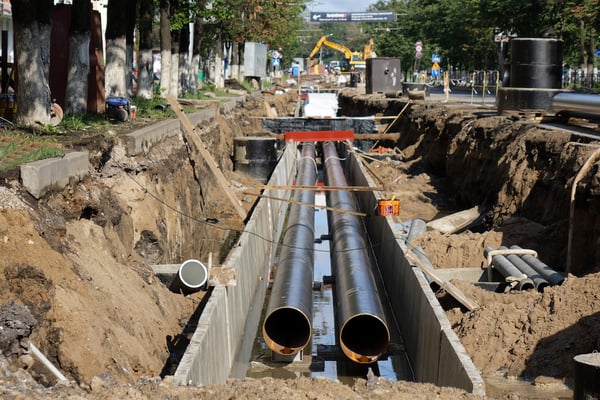
Sectional Point Repair
Sectional point repair is a targeted and efficient method used in municipal plumbing systems to address localized damage or defects within underground pipes without the need for extensive excavation. This technique is particularly valuable when dealing with specific areas of concern, such as cracks, leaks, or deteriorated sections, without having to replace the entire pipeline.
The process involves identifying the damaged portion through inspection, typically using remote cameras or other diagnostic tools. Once the specific problem area is located, a sectional point repair involves installing a specialized repair sleeve or patch to reinforce and seal the damaged section. These repair materials are often made of durable materials like fiberglass or resin-impregnated liners.
SprayWall
Sprayroq's premier product, SprayWall Structural Polyurethane, is an effective substitute for sewer replacement. This self-priming polyurethane lining, applied through spraying, restores structural integrity, offers infiltration control, and is resistant to chemicals. SprayWall can be applied in varying thicknesses, ensuring protection of municipal pipes for up to 50 years.
Directional Boring
Directional boring is a steerable trenchless method used for installing underground lines like sewer pipes, water pipes, conduits, and cables with minimal impact on surrounding areas. This technique ensures no collateral damage to property, no unnecessary traffic disruptions, and no commercial interruptions.
Plus, directional boring is environmentally friendly, sustainable, and cost-efficient. It’s also suitable for various soil conditions and jobs, offering effective and versatile solutions for repairing municipal sewers.
Looking for Help with Municipal Plumbing Systems in Sacramento?
If you suspect a problem with your local sewer system, it’s imperative to contact professional plumbers for assistance in order to ensure the health and safety of everyone in the community. To help find the source of the problem, there are a few things a plumber will do. Firstly, video inspections will be conducted to find the cause and diagnose the issue.
Once the source of the problem has been identified, it’s vital to evaluate all options for repair in order to find one that is effective and affordable. Modern municipal sewer renovations include innovative, trenchless techniques such as pipelining and point repair. These methods can significantly reduce labor and material costs compared to traditional dig-and-replace approaches.
However, there are likely going to be external costs associated with municipal sewer pipe repairs, particularly the disruptions caused by road closures and excavation. The severe surface disruptions in municipal projects can lead to significant expenses for road or sidewalk reinstatement. Fortunately, trenchless technologies can minimize these disruptions.
In the Sacramento area, Express Sewer & Drain is a leading provider of municipal plumbing solutions. Our licensed and experienced team knows the ins and outs of these vital plumbing systems, allowing us to efficiently diagnose and resolve any issues that arise. With our help, we can ensure that the municipal plumbing systems in Sacramento are always performing at a high standard to keep our communities safe. To learn more, get in touch with our team today!
Topics: Trenchless Technology, Municipal Plumbing

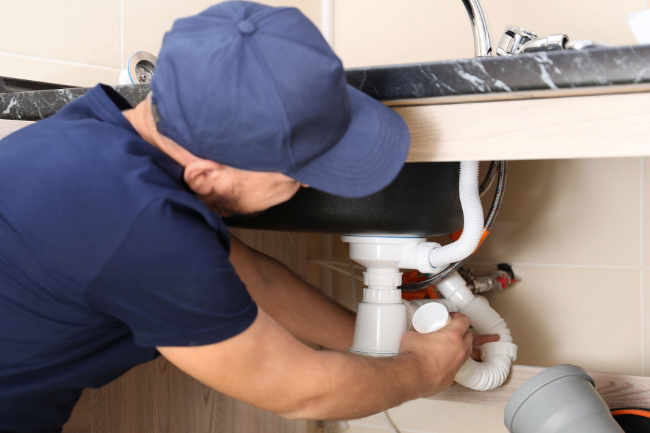
![Repiping Your Sacramento Home [6 Steps]](https://www.expresssewer.com/hs-fs/hubfs/plumbing%20tools%20and%20blueprints.jpeg?width=550)
